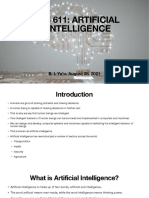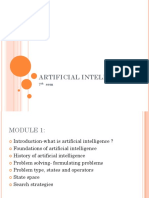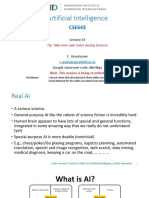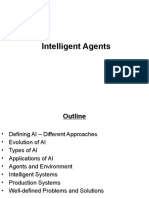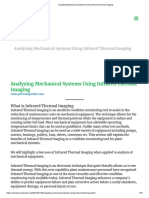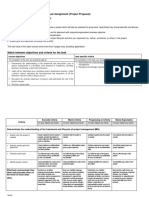0% found this document useful (0 votes)
17 views3 pagesSimple Ai
Artificial Intelligence (AI) refers to machines that perform tasks requiring human intelligence, built on foundations from mathematics, computer science, psychology, neuroscience, and philosophy. The history of AI spans from the 1950s with the Turing Test to modern advancements in machine learning and deep learning. Current AI technologies include Natural Language Processing, Computer Vision, and Robotics, with intelligent agents designed to maximize success based on their environment and goals.
Uploaded by
RcaCopyright
© © All Rights Reserved
We take content rights seriously. If you suspect this is your content, claim it here.
Available Formats
Download as PDF, TXT or read online on Scribd
0% found this document useful (0 votes)
17 views3 pagesSimple Ai
Artificial Intelligence (AI) refers to machines that perform tasks requiring human intelligence, built on foundations from mathematics, computer science, psychology, neuroscience, and philosophy. The history of AI spans from the 1950s with the Turing Test to modern advancements in machine learning and deep learning. Current AI technologies include Natural Language Processing, Computer Vision, and Robotics, with intelligent agents designed to maximize success based on their environment and goals.
Uploaded by
RcaCopyright
© © All Rights Reserved
We take content rights seriously. If you suspect this is your content, claim it here.
Available Formats
Download as PDF, TXT or read online on Scribd
/ 3










